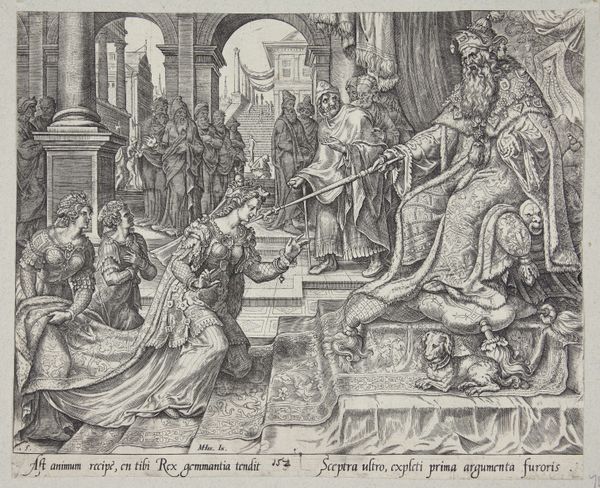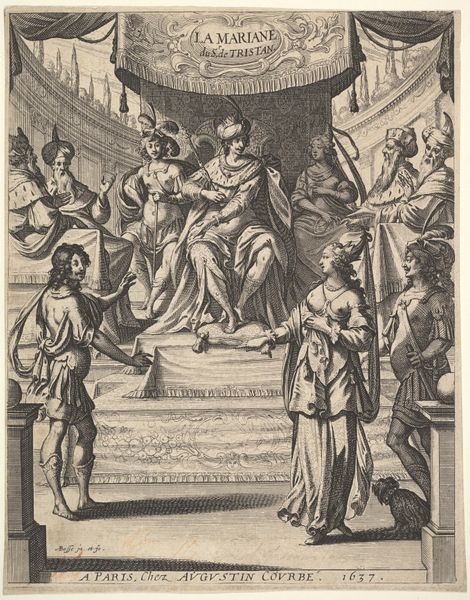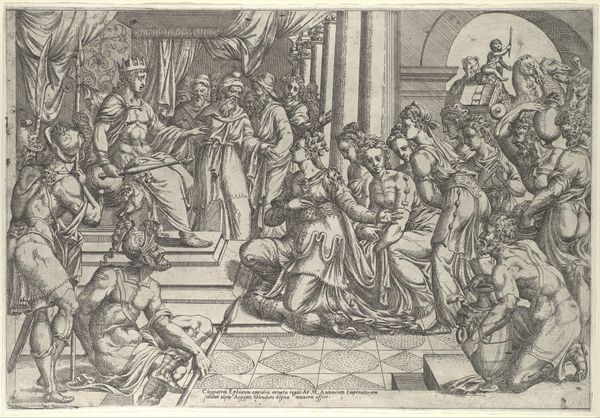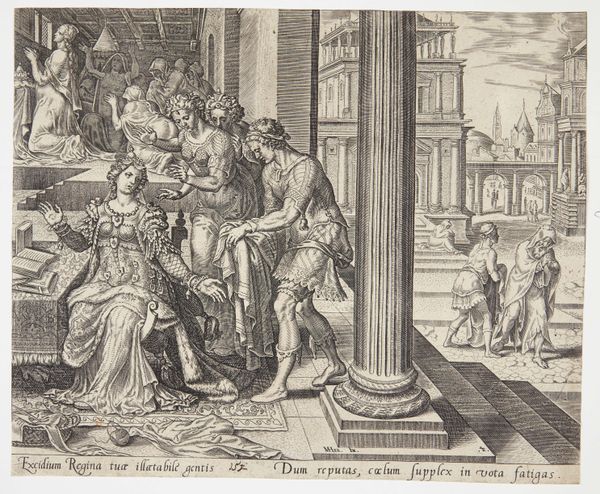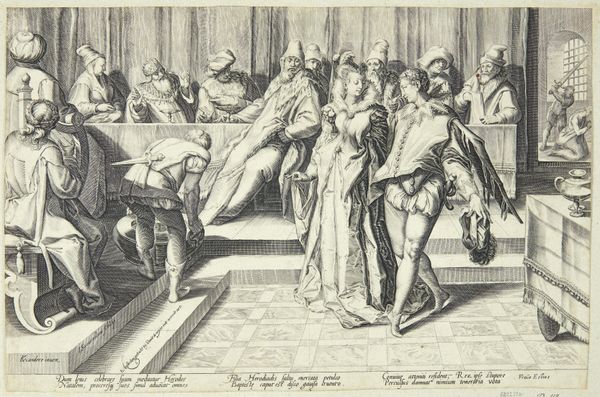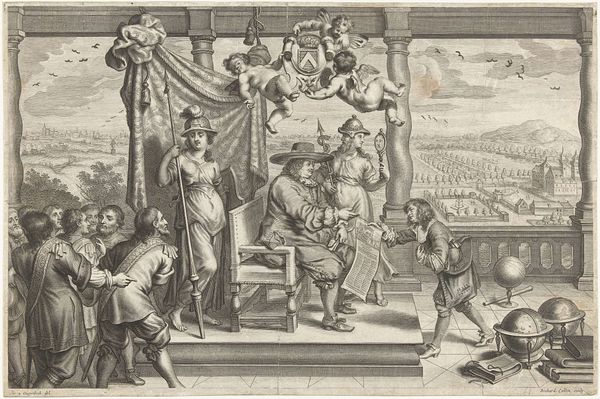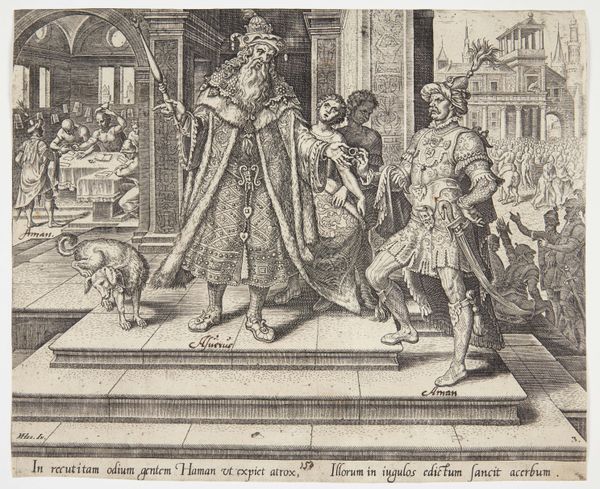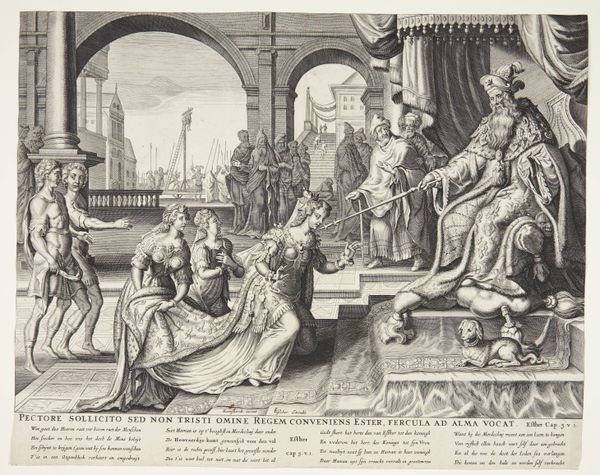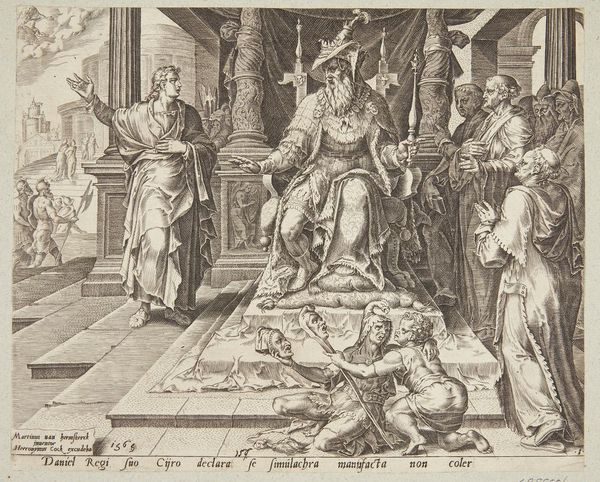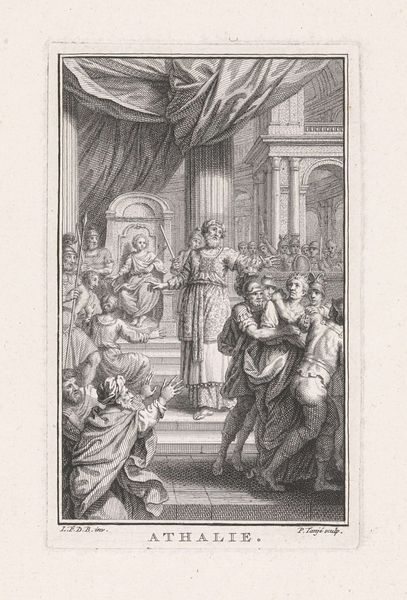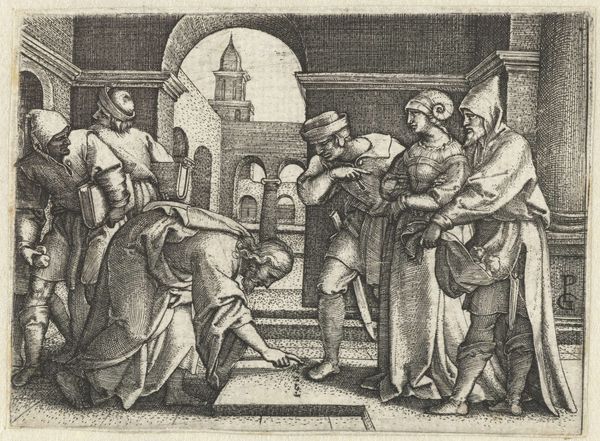
print, engraving
#
toned paper
#
mechanical pen drawing
# print
#
pen sketch
#
pencil sketch
#
sketch book
#
figuration
#
personal sketchbook
#
pen-ink sketch
#
pen work
#
sketchbook drawing
#
history-painting
#
italian-renaissance
#
sketchbook art
#
engraving
Dimensions: height 61 mm, width 83 mm
Copyright: Rijks Museum: Open Domain
Georg Pencz engraved "Ester Kneeling Before Ahasuerus" in the 16th century, capturing a pivotal moment of supplication and potential clemency. Here, we see Queen Esther kneeling before King Ahasuerus, a gesture laden with vulnerability and hope. Consider the scepter, a symbol of power and sovereignty, extended towards Esther. This motif of a ruler offering a scepter appears in various forms across cultures, from ancient Egyptian art to medieval royal presentations, always signifying the granting of audience and potential favor. Think, for instance, of images where emperors or gods offer similar objects—each act carries the weight of tradition. The act of kneeling itself is not merely physical; it is a profound expression of submission that taps into our collective understanding of hierarchical relationships. We respond viscerally to this display, recognizing the inherent drama and psychological tension embedded in the scene, a recurring theme throughout history and art. Over time, its interpretation has shifted depending on societal norms. Thus, the cycle continues, each iteration of these symbols reflecting new layers of meaning, shaped by the ever-evolving human experience.
Comments
No comments
Be the first to comment and join the conversation on the ultimate creative platform.
